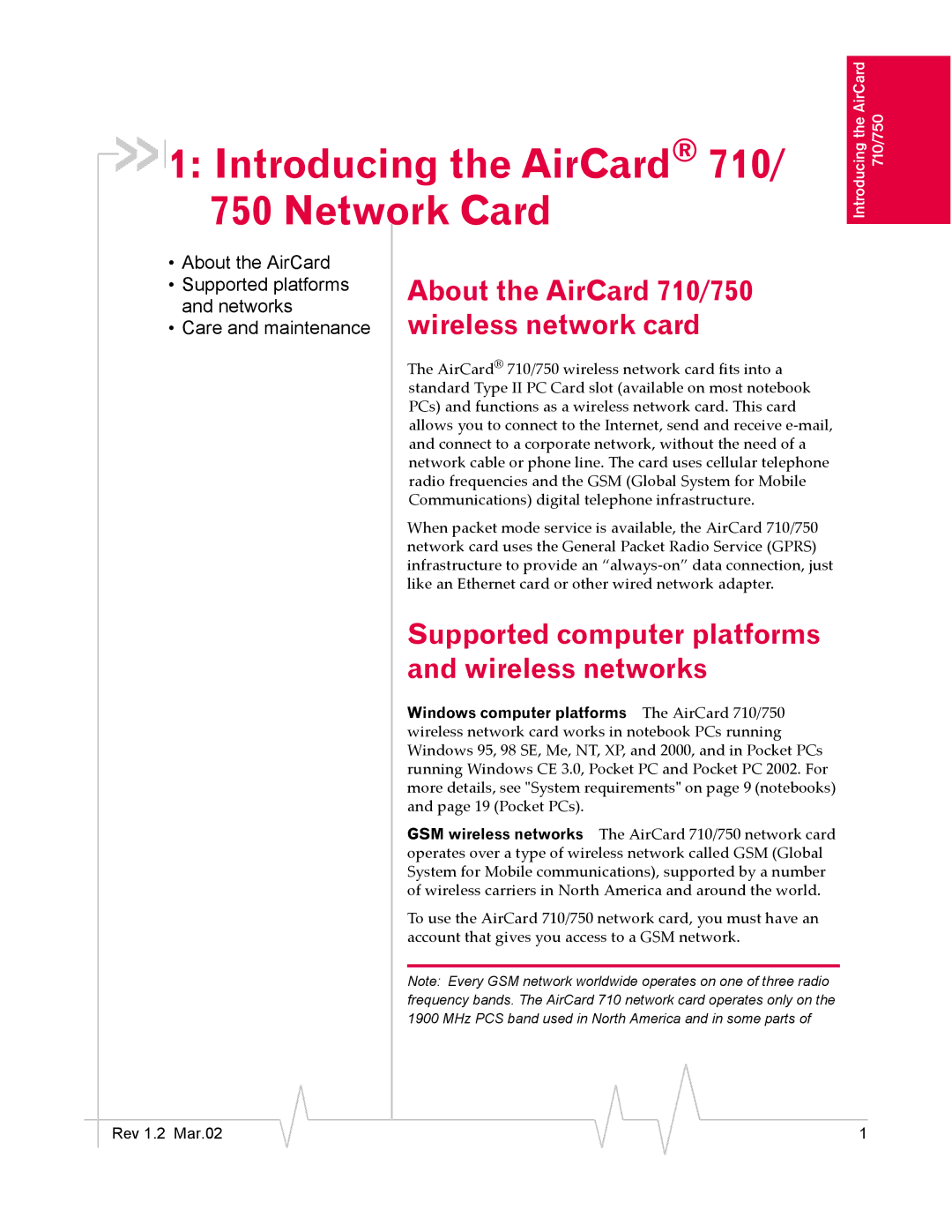



 1: Introducing the AirCard® 710/ 750 Network Card
1: Introducing the AirCard® 710/ 750 Network Card
• About the AirCard |
|
• Supported platforms | About the AirCard 710/750 |
and networks |
|
•Care and maintenance wireless network card
The AirCard® 710/750 wireless network card fits into a standard Type II PC Card slot (available on most notebook PCs) and functions as a wireless network card. This card allows you to connect to the Internet, send and receive
When packet mode service is available, the AirCard 710/750 network card uses the General Packet Radio Service (GPRS) infrastructure to provide an
Supported computer platforms and wireless networks
Windows computer platforms The AirCard 710/750 wireless network card works in notebook PCs running Windows 95, 98 SE, Me, NT, XP, and 2000, and in Pocket PCs running Windows CE 3.0, Pocket PC and Pocket PC 2002. For more details, see "System requirements" on page 9 (notebooks) and page 19 (Pocket PCs).
GSM wireless networks The AirCard 710/750 network card operates over a type of wireless network called GSM (Global System for Mobile communications), supported by a number of wireless carriers in North America and around the world.
To use the AirCard 710/750 network card, you must have an account that gives you access to a GSM network.
Note: Every GSM network worldwide operates on one of three radio frequency bands. The AirCard 710 network card operates only on the 1900 MHz PCS band used in North America and in some parts of
Introducing the AirCard 710/750
|
|
|
|
|
|
|
Rev 1.2 Mar.02 |
|
|
|
|
| 1 |
|
|
|
